Want to build a six-figure business?
Building a business is tough. But contrary to what most people will tell you, there are simpler ways to building your business.
These steps help you build a thriving business while you work a full-time job (and don’t have a lot of time).
Here’s how!
Is this why you want to start a business?
If you’re like me a few years ago, you’ve dreamt about starting a six-figure business and quitting your job for longer than you can remember.
For three years, I told myself day after day that TODAY would be the day I finally got serious about building my business… Only to put it off until “tomorrow” because even though I wasn’t completely happy, I was comfortable.
I let what was “comfortable” cost me my dreams for all those years.
By the time I was 25, I was “making it” — at least from the outside. Working at a New York startup and managing a team and millions of dollars in business, I had the six-figure salary, high-rise condo, and proud parents to prove it.
But on the inside, I wasn’t happy or fulfilled.
I was sick of sitting through endless meetings and working my tail off for someone else’s business.
I wanted more out of my career — and my life — and I knew there had to be something better than working at a 9-5 I wasn’t passionate about.
When I tried to motivate myself that “I can build a business and leave my 9-5” I couldn’t stop doubting…
Really? I don’t know anyone else who has done it. Would I be better off focusing on my job? Am I just wasting my time? Is this a pipedream? Will I burn out? Are there really enough clients? Will they be able to find ME out of all the people in the world?
Little did I know that in late-2014, things would take a drastic turn.
Why I finally started building my own business
“Your father almost burned down the kitchen trying to make some oatmeal…but don’t worry. My friends brought me some chicken soup.”
This is the conversation that changed my life.
It was a short 2-minute call with my mother, who at the time was undergoing chemotherapy and didn’t have energy to talk longer.
While she was fighting the battle of her life, I was 1,600 miles away…
Unable to do anything for the mother who’d given me everything. (I’d used up my paid time off earlier when my father had been rushed to the ER for heart surgery.)
That’s the moment I realized how much it had cost me to not build my own business.
My six-figure salary and cushy job meant nothing if I couldn’t be there for the people I loved when they needed me. So for my business, I wanted it to be one that would give me control over my own schedule, be scalable, and at least replace my salary. For these reasons, I decided to start an online business.
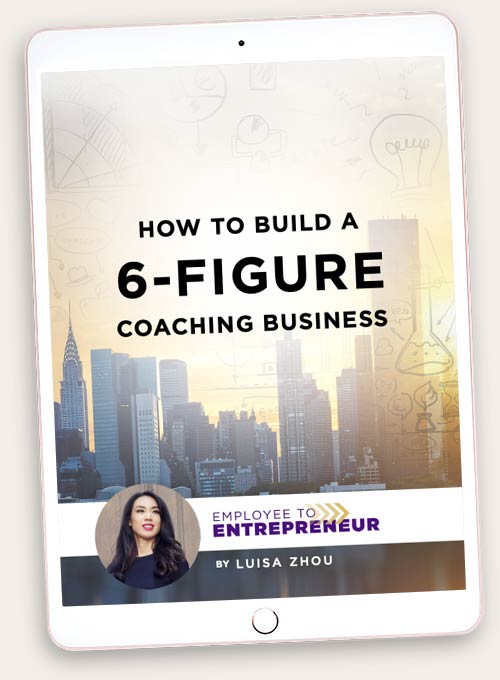
Want to Build a 6-Figure Coaching Business So You Can Achieve More Freedom?
Get Instant Access To My FREE Ultimate Guide Below!
When you sign up, you’ll also receive regular updates on building a successful online business.
Why I didn’t quit my day job to build a business
There’s this myth that successful entrepreneurs turn in their notice, go all in their business, and somehow pull through against all odds. I’m sure that happens, but it’s one of the most stressful things you can do to yourself. By this point, I’ve seen so many people make that choice, only to have to go back to their 9-5.
I’m an incredibly risk-averse person. Back when I was in my corporate job, I worked my butt off to go to a good school, get a good job, salary, and position. I wasn’t just going to throw it all away on a small chance that I might succeed as an entrepreneur.
That said, I knew I wanted to start a profitable business so that I wouldn’t need to beg my employer to take me back.
I did it by building my business while I was still in my day job.
And four months after my first sale, I had made $106,000, which allowed me to hand in my notice and finally leave my job.
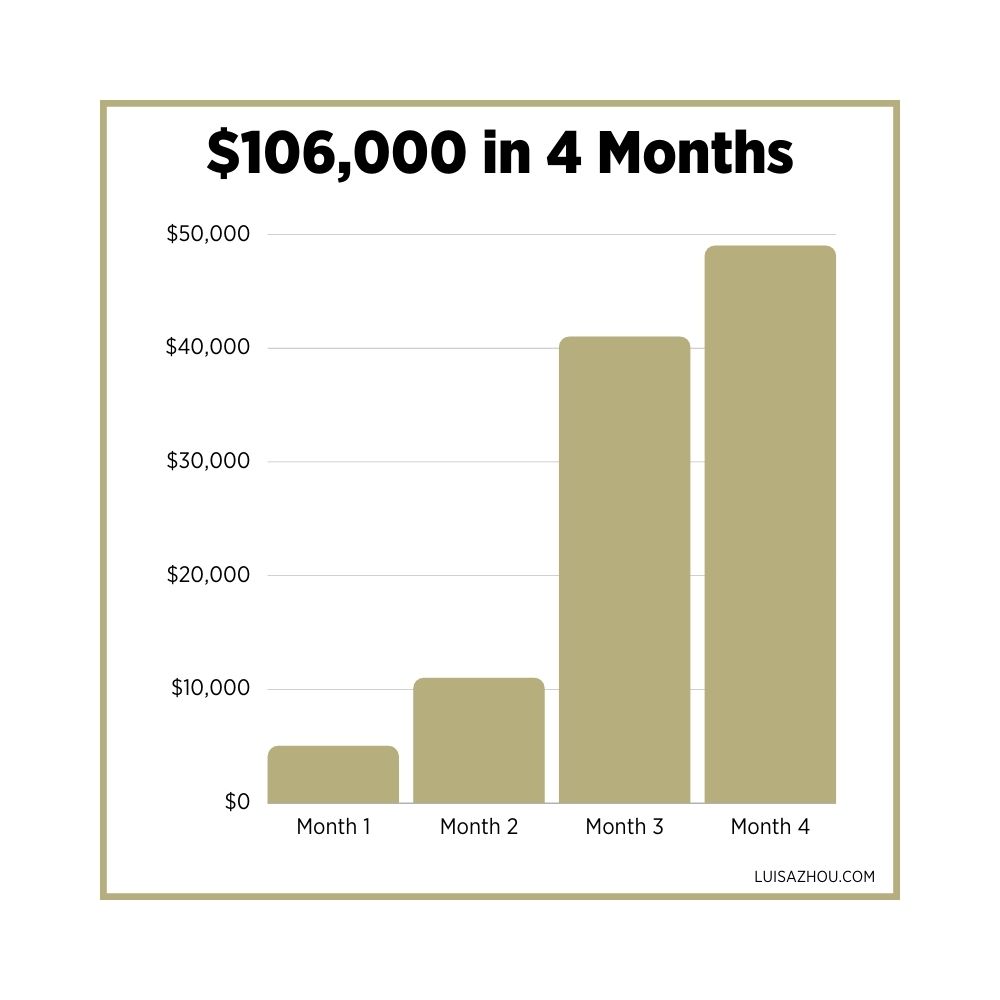
That gave me a really good start where I had momentum built up. I was busy from the start and didn’t look around thinking, “How will I pay my bills next month?”
In fact, thanks to my six-figure business, I was able to start my existing business, which I grew into a seven-figure business in the first year. Today, I’ve helped thousands of ambitious people start and grow their businesses.
Here’s how I built my business before I quit my job.
Step 1: How to find your business idea
Month 1: How to get your first client
Month 2: How to choose the right price
Month 3: How to decide on the right marketing strategy
Month 4: How to hit 6-figures in sales
Step 1: How to find your business idea
People tend to think of entrepreneurship as a straight line. If only…
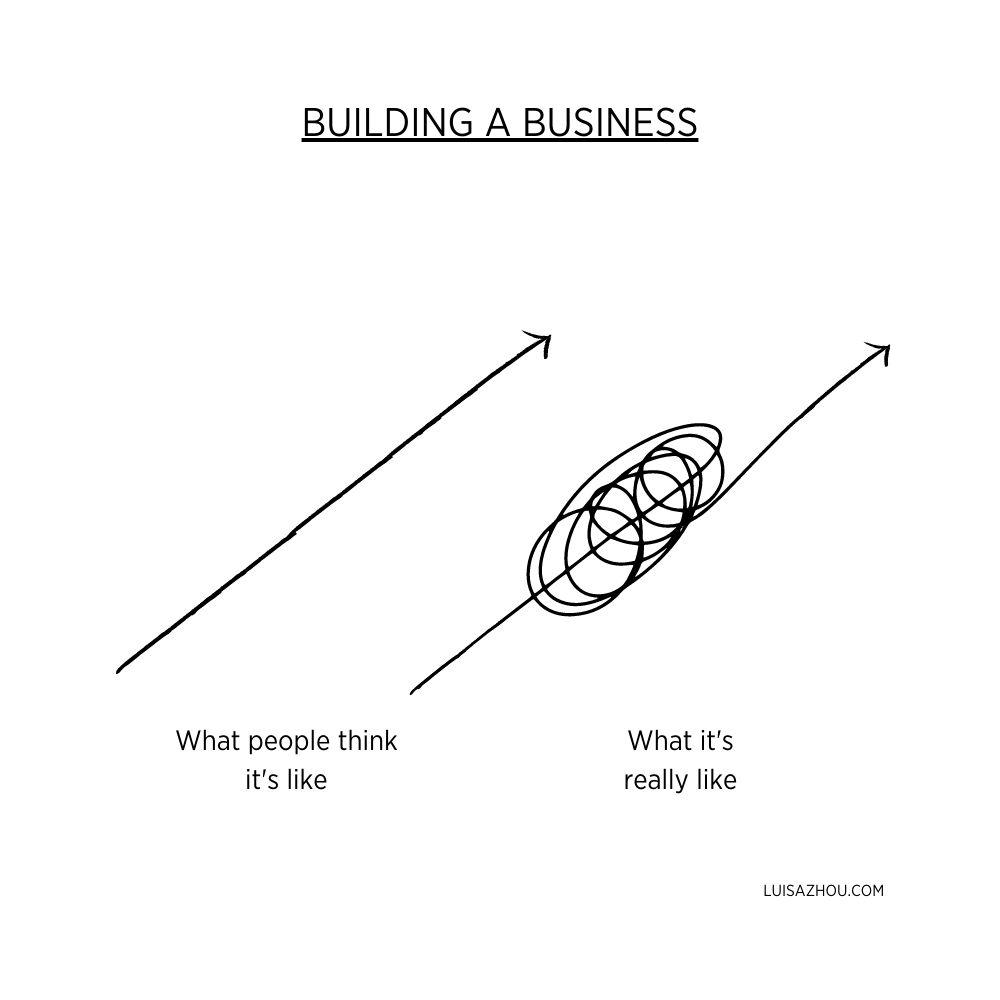
Even though I built my business so fast, I was anything but an overnight success.
I started my first business, an offline tutoring business, when my mom’s friends wanted me to help their kids get into good colleges. (My mom got a lot of calls the summer I got accepted into Princeton.)
I grew it into a profitable business, but I decided to quit when I realized that I had spent a decade doing that for myself and I didn’t want to spend the next two decades doing it for someone else.
I then went on to co-found a mobile payments startup that reached a multimillion-dollar valuation before it petered out.
After these business adventures, I worked in different industries in the corporate world (from engineering to financial services to digital advertising).
But despite these earlier businesses, it wasn’t always smooth sailing when I eventually decided to start my online business. First, I had to decide what my business model would look like.
How I chose my business model
There are a lot of business models you can use to start a business. What I did know from the start was that I wanted to get out of my job as quickly as possible. I needed a business that would help me maximize my revenue right from the start.
That excluded a lot of business models. Physical products and affiliate offers that you sell on a website require a lot of volume, which takes years to build up. I didn’t have that (and I knew nothing about e-commerce or affiliate marketing).
I also realized that selling an online course for a few hundred dollars, while scalable and profitable, would require hundreds of sales every month to replace my salary (and then some because I would have had to account for business expenses and taxes). And I didn’t want to spend years building a side business.
That’s why I chose coaching. From all the research I had done in the online space, I realized that a service-based business like coaching, consulting, or freelancing, is the easiest, fastest, and simplest way to build a business.
It also happens to be the most popular side hustle business model.
(The online business world was very different back then. Coaching wasn’t nearly as widely accepted, so it actually took me about 2-3 years to decide on what business to build.)
As a coach, I would sell a skill I already had. And because I wouldn’t use an hourly pricing model, but instead charge by the package, I would be able to ask for a premium price.
The math was simple. With a package costing $5,000 (for a 6-month program), I would need to sell just 20 packages to reach six figures.
That, to me, felt much more doable than selling hundreds of products. With a few units sold every month, I’d have a highly profitable business and be able to quit my job.
First business idea: Excel consulting
Now that I knew what type of business I wanted to start, the next step was to find an idea.
I had noticed that there were quite a few six- and even seven-figure businesses that sold consulting on how to use Microsoft Excel. As it was something I worked with daily at my job and I was good at, I thought it’d be an easy business to start.
(Spoiler: There are no “easy” businesses.)
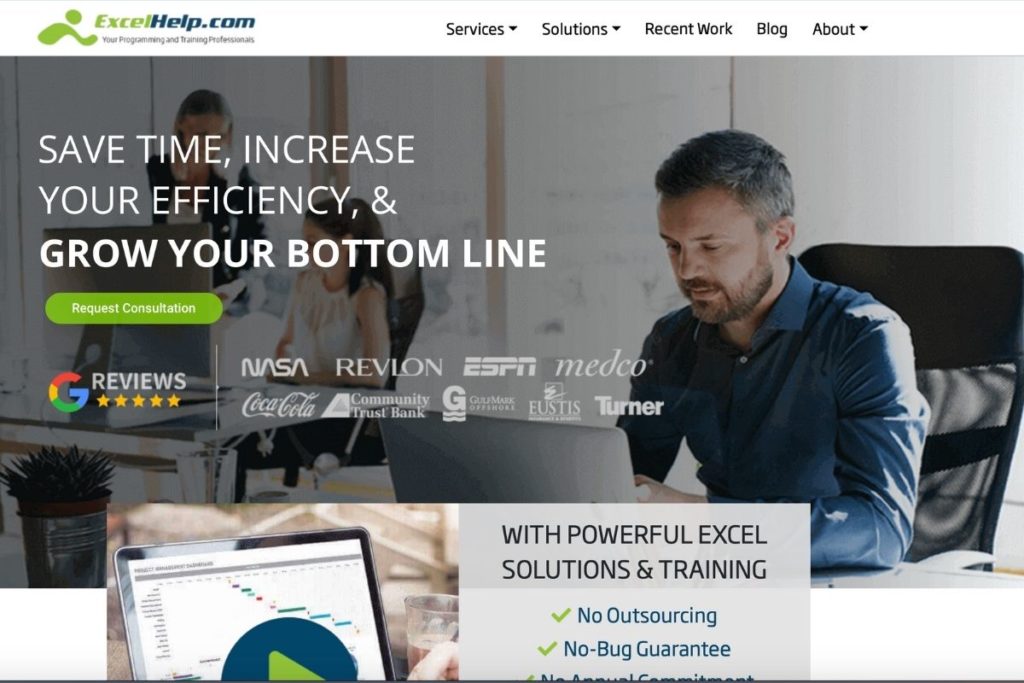
I was so focused on leaving my job as fast as possible that I didn’t give my audience or product a second thought. In other words, I set myself up for failure by not researching my market.
What’s worse, I expected instant success. I was completely unprepared for all the stages of building a business and inevitable setbacks like rejections and failures.
And as much as I thought Excel consulting would be easy, I didn’t consider an important factor. The most boring part of my day job was working with Excel. I had zero motivation to talk about it in my spare time and working on my business felt like a chore.
Unsurprisingly, I didn’t find a single client. After about a month, I gave up and moved on to my next business idea.
Second business idea: Career coaching
At the time, people would frequently ask me about how I managed my career, from switching industries to landing leadership positions at such a young age. I thought that these were things I could help people achieve in their careers. And that was how my career coaching business was born.
I’d learned from my previous attempt just how important market research is. So I sat down with the people who had asked for my advice and talked about their challenges and dreams. At the end of our conversation, I’d ask, “Would you be willing to pay for help to get a better job/salary?”
Two out of five people said yes. Even though I seriously undercharged and set my rate at $300 for a month’s coaching with four weekly calls, I finally had a business!
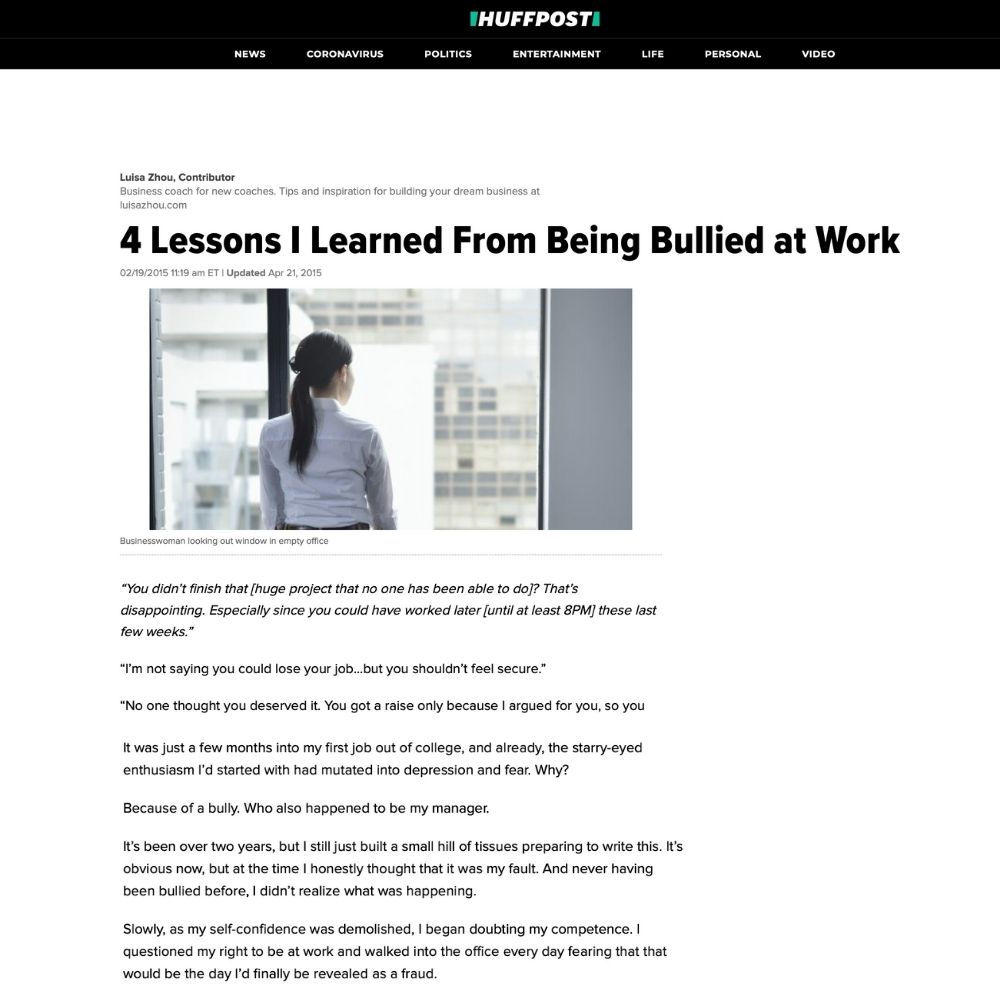
But I soon realized that I didn’t like career coaching — at all. I didn’t enjoy corporate life and I was doing everything I could to quit my job. And as I figured that at some point, the people I was helping would want to leave their jobs and do what I did, it didn’t feel right to me to continue coaching them.
Third business idea: Digital advertising consulting
By this point, I was running out of business ideas. I remember thinking, “I don’t know if I have more businesses inside of me” and I wasn’t sure I would find any business idea that would work.
Fortunately, I was soon proved wrong.
As I was working on my career coaching business, I had hired a copywriter to write my website. Out of curiosity, I asked how she got most of her clients and she said “Facebook groups.” The group that was working best for her was a group called “Entrepreneur Incubator,” a group for female entrepreneurs.
I didn’t even know Facebook groups were a thing. So I instantly signed up and checked it out. And as I was scrolling through the posts, I realized that there were a lot of questions about Facebook ads.
That was a “eureka” moment for me. At my job, I spent my days managing and analyzing advertising campaigns for some of the biggest brands out there. With this experience, it would be a steal to work with me!
That’s how my third business idea, digital advertising consulting, was born.
This time, it worked.
(By the way, I’ve gotten questions about if I had a non-compete clause at my job at the time and how I worked through that. The thing is, the business I worked at had massive clients. We’re talking corporations like Mercedes, BMW, and Kelloggs.
The clients I was looking at working with, small businesses with tiny ad budgets compared to these corporations, weren’t even considered competition. I was upfront about my side business with my manager, who basically laughed it off and thought it was a cute thing.)

Want to Build a 6-Figure Coaching Business So You Can Achieve More Freedom?
Get Instant Access To My FREE Ultimate Guide Below!
When you sign up, you’ll also receive regular updates on building a successful online business.
Month 1: How to get your first client
Revenue: $5,000
To market my different business ideas, I was following all the traditional advice: I put up a website, blogged, posted on social media, built an email list… But after a year of doing this, I had zero sales.
I realized that the people I was looking to for advice hadn’t been in a job when they built their businesses or they had built them 10 years ago when the world and the Internet looked very different.
I didn’t want to get stuck in my job for another 10 years, and I knew that the pace I was growing at would mean just that.
There had to be a better way.
Zeroing in on the most important step
Because I was in my corporate job, I didn’t have 40 hours a week to use on my business. Some days I had 30 minutes or less. So I thought, “What’s the most important thing I can do during that time?”
From my previous attempts, I knew it wasn’t blogging or email marketing. Those strategies would take too much time.
Plus, my job already ate up so much of my energy. I didn’t have the mental capacity to write blog posts in the evening.
Instead, I realized that it comes down to getting in front of potential clients, not waiting for them to find me. And by just talking to them and connecting with them, I’d at least learn something from them about what my clients wanted and didn’t want.
So I asked myself, “What is the best way for me to go about it?”
As I had just discovered Facebook groups, I’d seen that my audience was hanging out there and asking questions specifically about digital advertising.
While my job was stressful, I knew it would be completely doable for me to answer questions on something I already knew and write simple social media posts.
Because I was focused on connecting, not selling, I didn’t go into these groups and say, “Hey! Here’s who I am and here’s how you can hire me.” (Spoiler alert: That just doesn’t work.)
Instead, I went into the groups every day. I didn’t have a strategy, a masterplan, or anything similar. I thought that I’d just share a lot of my knowledge, bond with entrepreneurs, and hopefully get some market research insights.
That’s also why I didn’t have to circumvent any promotional rules in Facebook groups. I respected the vibe and rules in that group and as my posts were pure value and no promotion, they were just a great addition to the group. I was also careful to not go into groups managed by people who offered digital advertising themselves, so that they wouldn’t think I was poaching their clients.
The first few weeks: showing up
The way I did it was by posting social media posts, answering questions that I noticed in the groups when I searched for terms related to ads such as “cost-per-click,” “ads,” and “CPL”, and private messaging with people who wanted even more help from me.
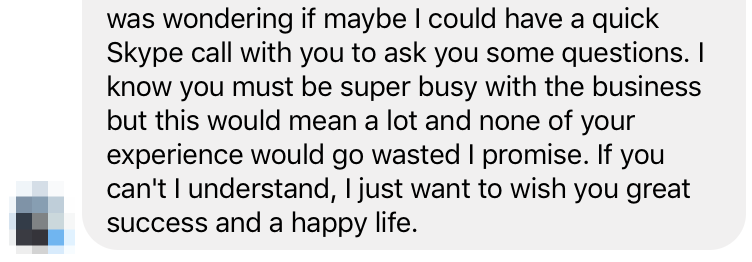
By focusing all my time and energy on doing this, I quickly built relationships and connected with people.
They started noticing that I was sharing so much awesome content and advice.
That said, it wasn’t like people noticed me right away. I hardly got any response for the first few weeks. But as the momentum built up, people started paying attention.
It was about three weeks into it when a couple of people messaged me and wanted to learn more about what I was saying.
And that’s when I signed my first client.
The next weeks: my first client
I had initially gotten in touch with this entrepreneur in a Facebook group and asked her to answer a few market research questions in return for some coaching on her Facebook ads strategy.
After the call, she came back to me with a few follow-up questions. Over the next few weeks, I answered all her questions and gave a ton of value basically because I thought it was cool that someone cared about what I had to say.
So, I was surprised when she messaged me out of the blue and said, “Luisa, you’ve already helped me so much for free and I know I can get so much more help if I hire you. Would you want to talk about it?”
I was totally unprepared! I even asked her to give me a week so that I could come up with an offer.
Before our sales call, I was sweating bullets. But without blinking, she said “yes” when I gave her my price: $5,000 for a 6-month coaching package.
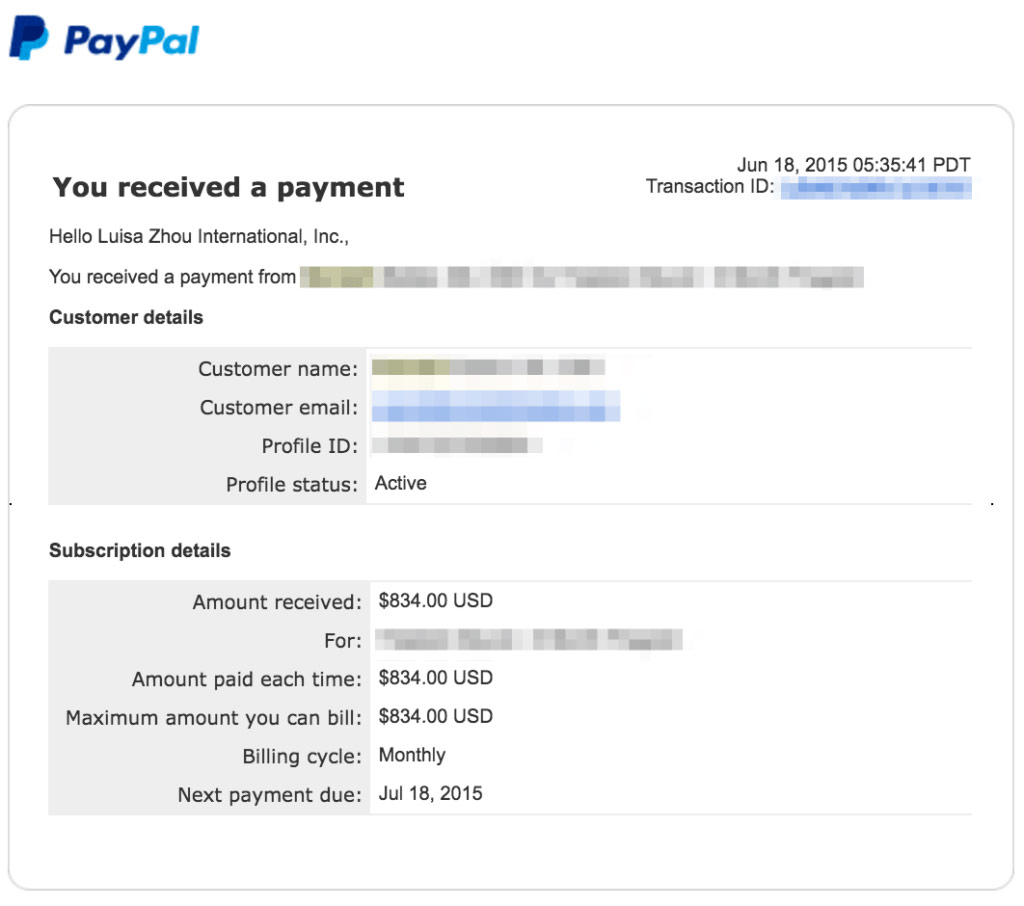
The reason she didn’t have any objections was that I had given her so much value upfront. She essentially had no doubt in her mind that I could help her in a paid position.
That wouldn’t have happened if I’d been busy setting up a gorgeous website or writing emails. There’s a time and place for these activities, but not in the earliest days of a business.
Month 2: How to choose the right price
Revenue: $11,000
Having sold my first package, I was sure that people would line up to work with me. After all, I had calculated my rate based on my hourly price at my day job and how much time I thought I would spend working with a client. I figured it was a bargain for people to work with me, considering my experience.
I was wrong. The next 30 people I talked to said some version of, “you’re too expensive.”

(A woman even told me, “I can’t hire you because you look like you’re twelve.” That didn’t exactly increase my confidence.)
But when I thought about why my first client had said yes to working with me, I realized that it came down to one thing: trust. I had already given her a lot of value before she hired me.
And even though I was a digital advertising expert in my 9-5, people online had no clue about who I was or what I could do. To them, my resume didn’t really matter… Because I hadn’t shown them how I could help people like them, online entrepreneurs.
So I got off my high horse and lowered my rate. I figured this would do a few things. First, it would be easier for potential clients to say yes. And once I got more clients and could help them get awesome results, people would be much more willing to pay my rate.
So for a limited time, I asked for $1,500 for a 3-month consulting package.
Plus, to replicate the free advice I had given my first client (but without working for free for weeks), I tested offering one-time 30-minute free consulting sessions where I helped people with their advertising campaigns.
I posted my offer in Facebook groups with a template that included:
- An attention-grabbing sentence, such as a question that spoke to my audience’s challenges and goals
- A few sentences introducing my free consulting offer (and a note that seats were limited)
- A description of the top 2-3 challenges my clients were facing
- A clear call to action to schedule a call
- A quick personal introduction so people knew who I was to establish credibility
And it worked! People started saying yes to working with me. After I had shared my lower price with a few clients, I raised my rate back to $5,000 and didn’t look back.
The best part was that my momentum had started to build.
When I signed on clients, I worked hard to help them get great results. And as my clients got results, I was able to share those results in Facebook groups.
People thought, “Oh, I was skeptical, but now I see that she actually knows what she’s talking about.”
Even if they didn’t buy from me right away, they would continue seeing my content. Maybe a few weeks later, they’d reach out to me and say, “I love the results you’ve helped your clients get. I’m ready to hire you.”
At that point, I was no longer chasing them. They were starting to come to me.

Want to Build a 6-Figure Coaching Business So You Can Achieve More Freedom?
Get Instant Access To My FREE Ultimate Guide Below!
When you sign up, you’ll also receive regular updates on building a successful online business.
Month 3: How to decide on the right marketing strategy
Revenue: $41,000
One of the key reasons why I was able to grow my business so fast was that I didn’t switch strategies when I started seeing results. Instead, I doubled down on what was working.
That meant: even when I crossed $10,000 in sales, I didn’t sit down to create a beautiful website. I just sent a link to my LinkedIn page to people who were interested in working with me so that they could check out my experience.
I focused solely on connecting with my audience and leveraging Facebook groups. And I also added another way to talk to my audience and share my knowledge — livestreams.
At this time, Periscope was gaining traction as the first real live streaming app. So I started using it to share my videos 2-3 times a week. Livestreams added a new, more personal way for me to interact with my audience and I was able to quickly build trust.

And with everything I did, I was very consistent and methodical:
Testing Facebook groups
From the start, I had tested different Facebook groups to see which ones worked for me (aka. I got any response in) and which ones didn’t. Every few weeks, I’d test 1-5 groups depending on my work schedule and how many groups I was already active in.
Some groups were a flop. And some worked really well. (If you’ve ever read about the 80/20 rule, you know most things in life work this way. So about 20% of the groups I was in would yield most of my results.)
Because of my testing, I didn’t end up wasting my time in groups that didn’t work for me. Instead, I focused all my time and energy on groups that did.
Scheduling everything
To make it a no-brainer to engage in the groups every single day so that I didn’t have a chance to talk myself out of it, I just marked my tasks in my calendar.
I knew exactly what to do and when. “On Mondays, I go into these groups and share these posts. On Tuesdays, I go into these other groups and share my posts. And Wednesdays, I search for questions to answer.”
I knew my decision-making capacity would be drained when I came home from work at night. So with this system, I had removed any need to make decisions, and instead, I sat down for about 30 minutes and got my tasks done for that day.
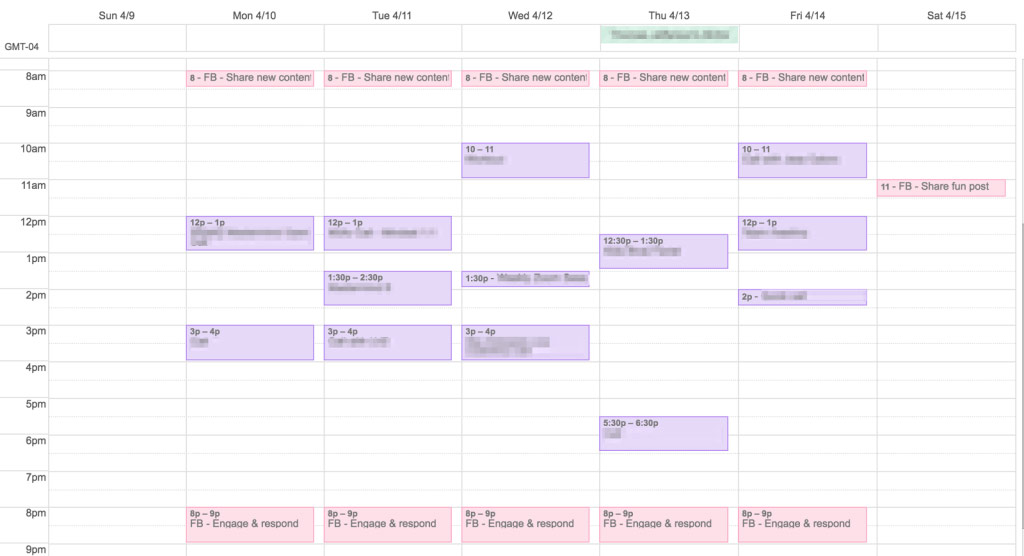
During weekends, I worked more on creating content for the upcoming week. Once I started getting sales calls, I also scheduled those for the weekend.
Now, I’m not a robot so it wasn’t like I wasn’t feeling completely unmotivated on some days. But all in all, I missed maybe one or two days — and thanks to this consistency, I built up momentum faster than I would otherwise have done.
Improving my content
I was also methodical about the posts I shared.
I tracked pretty much everything so I knew what was working and what wasn’t.
If a post didn’t get any engagement, I would sit down and think, “is this topic just something that people don’t care about? Maybe it was too boring or technical. Or was it the way I was saying it? Or was it the group?”
Then, I’d ask myself, “how can I rewrite this?”
Most of my content did nothing for me. Especially in the beginning, no one liked or commented on my posts.
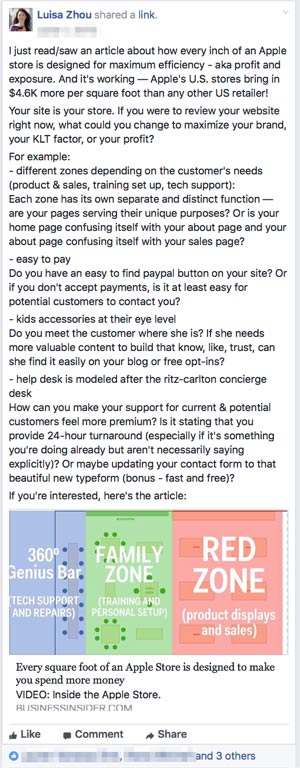
But none of my success came down to a single post, going viral, or anything of the like. Instead, it was the snowball effect of putting out consistent, great content over the course of several months that helped me build my business.
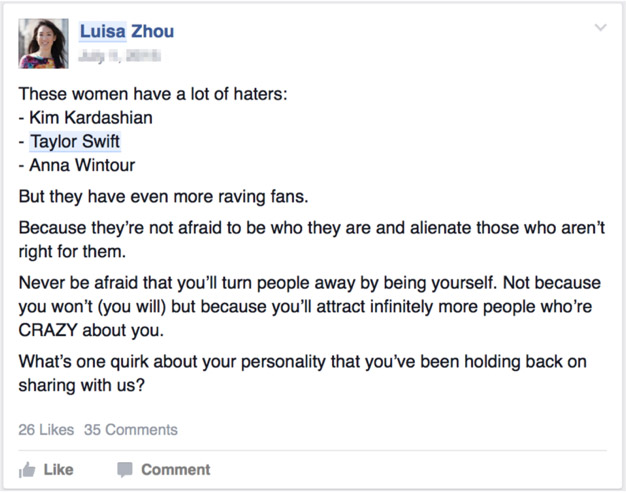
Month 4: How to hit 6-figures in sales
Revenue: $49,000
My fourth month was my best month by that time in my business.
That’s because my growth wasn’t linear. It was more like a hockey-stick growth curve. In the first few months, I only got a few clients. But the month before I left my job, I suddenly got an influx of new clients and existing clients who wanted to renew their contracts with me.
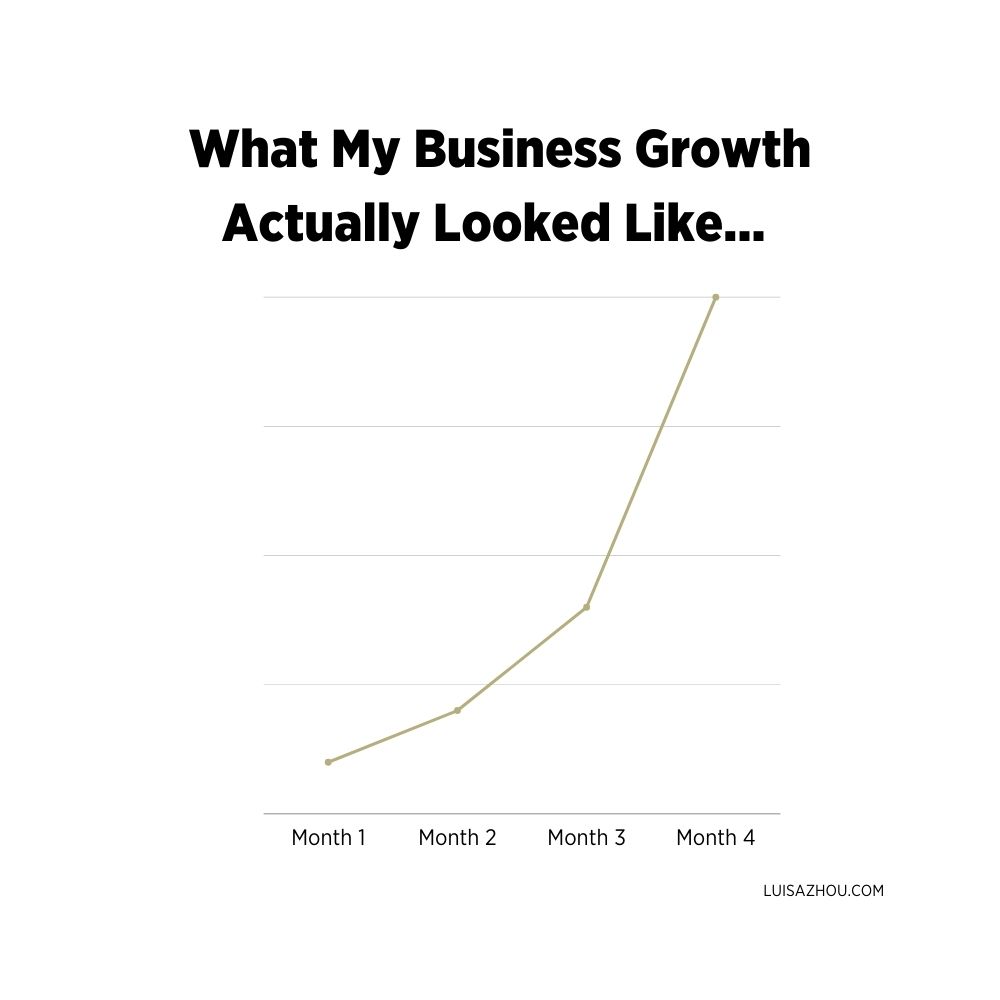
When I started building my business, I had told myself, “If I make double my take-home salary three months in a row, I’ll turn in my notice.” And by now, I had made over six-figures, so it was time to leave my job (and not look back).
Taking one step at the time
Now, I want to underline that it wasn’t like I set up a business and got all these clients. Remember that I had spent the previous years building businesses that didn’t pan out.
But I had learned a lot from those attempts. For example, I knew just how important it is not to focus on the end goal, but instead, go all-in on the step you have in front of you.
In the first month of my business, my only goal was to get my first client. In the second month of my business, I focused on getting a few more. And by my third and fourth months, I wasn’t planning all these fancy launches or how to scale things. I was thinking about how to get more clients with the things that were already working for me.
And when I shared content and my knowledge in Facebook groups, I wasn’t thinking, “I’m giving away so much of my free time, will I get something in return?”
I thought, “Even if this doesn’t lead to anything, I’m going to learn a bit more about what my clients want and don’t want. And there will be one more person out there who knows me and knows I’m legit. Sooner or later, that’s going to be helpful for me.”
Scaling my business came much later when I had left my job. (You can read more about it here.)
Investing in my business
I also invested heavily in my business, which was a major reason why I was able to grow my business so fast. I hired copywriting coaches, mindset coaches, business coaches, designers, lawyers…
Some of these investments didn’t give me a great return on investment (like the business coach who kept saying “this should work” or “you just need to want it more” when I didn’t get results. Or the lawyer I hired who, in the end, knew nothing about online businesses — he didn’t even know what a website cookie was.)
My mistakes ended up costing me well over $18,000 in my first four months in business.
But some of my investments did help me get great results. And it’s partly thanks to those investments that I was able to leave my job with a fully operational six-figure business.
Want to learn more? In this video I share my costs and investments as I built my business:
Your turn
We’ve covered a lot. As you can see, building my business came down to doubling down on a few fundamental steps. It was only when I had a six-figure business that I started trying out advanced marketing strategies, like Facebook ads and launch funnels. (And for the first two years, I only focused on Facebook as my marketing platform.)
I was very careful about what I committed to and I would never have built up my reputation in Facebook groups as fast as I did if I had spread myself thin on several social media platforms, built my email list, and held webinars.
In this YouTube video, I talk a bit more about what my journey looked like:
If your building your first business while you’re working a busy 9-5, these strategies will serve you well:
1. Validate your idea
It took me three attempts to find my business idea. But I did take action, even though two of these ideas ended up being dead ends.
Don’t overthink your idea. The most important criteria are that it’s something you enjoy doing, have experience with, and that it solves a problem for people.
Note that you have to enjoy doing something enough, even if it doesn’t need to be your life’s passion. It took me a month to write a single post for my Microsoft Excel consulting business and with that in mind, I realized that I wasn’t interested enough in Excel consulting.
Once you’ve chosen an idea, go to Facebook (or a similar platform) and search for what you’re helping people with.
Click on the “groups” tag and choose three groups that have at least 1,000 members and are relatively engaged.
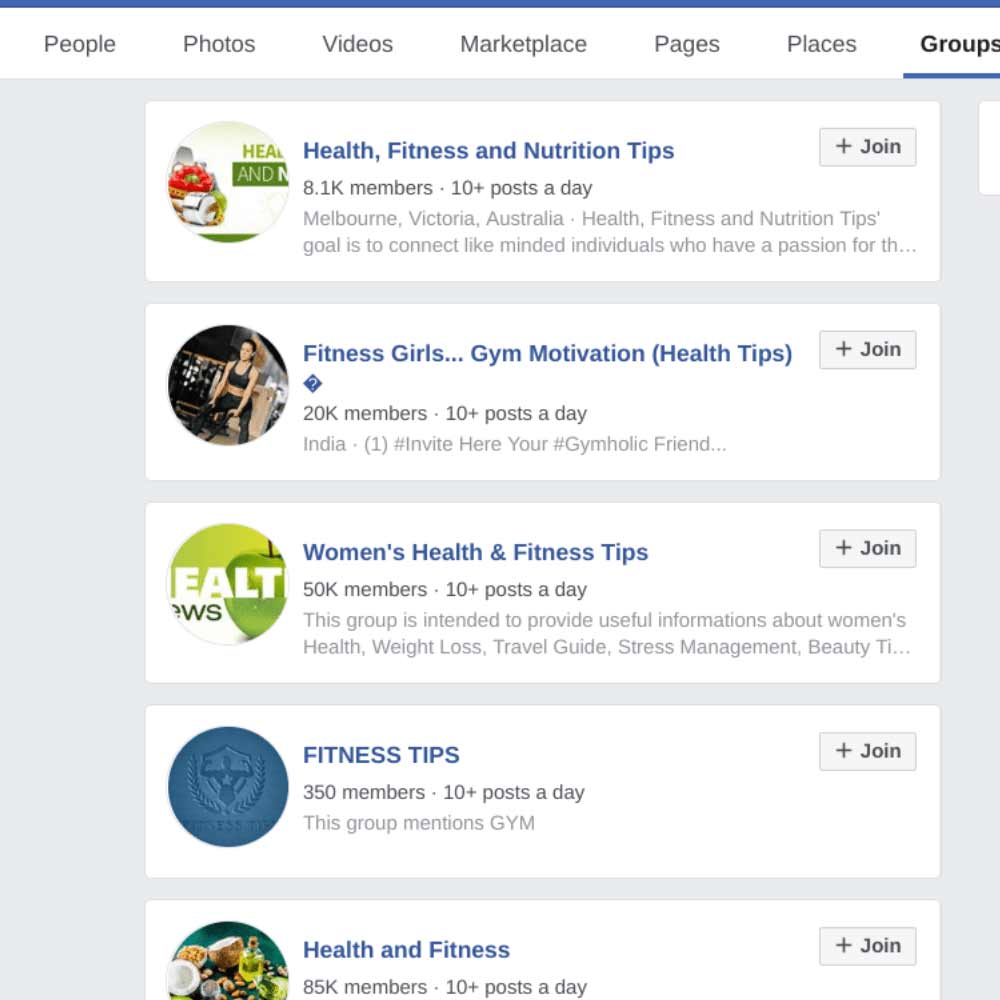
Your first task is to validate your business idea, aka. to understand if it’s something that people want to pay for. It can be as simple as asking three people in the Facebook groups you found to hop on a call with you so that you can ask questions about their challenges and dreams in exchange for a free coaching call.
2. Start with a premium offer
The reason I chose coaching as my business model is that it made the transition from my 9-5 to my business smooth and stress-free. I didn’t need to do much upfront research or build a product because I was selling something I already had — my knowledge.
With the right business model, you can replace your income and not stress about money.
And that’s a premium offer (coaching, consulting, or freelancing).
Note: you need just ONE product. Don’t add on other offers before you’ve crossed six figures. Multiple offers will add on too much complexity that just goes to confuse your audience.
3. Find clients online and build relationships
Don’t wait for clients to find you. Instead, ask yourself, “Where are my clients spending time online and how can I get in front of them?”
And this is key: Choose one platform. One of the biggest mistakes people make is that they try to be on several platforms at the same time.
My audience was on Facebook. It’s still a great place to connect with people, but the same strategies work on Instagram, LinkedIn, or wherever your audience might hang out.
Once you’ve chosen your platform, ask yourself, “what’s the easiest way I can do it?”
For me, it was to write a post every day for the next three to four weeks. That was ALL I was doing at the time. I didn’t have to make any other decisions — I promised myself that I’d be consistent and if I had nothing to show for it at the end of those weeks, I’d reconsider my strategy. But this did require that I went all in and fully committed to these tasks.
Another key: get comfortable with selling. When I went on Facebook, I was trying to connect with people. I wasn’t trying to hard-sell them, but instead, I was willing to be patient and let them build their trust in me and show them my value. Once I had built up that trust, I was comfortable selling.
4. Each step builds on the previous one
They say, “don’t run before you can walk.”
I didn’t focus on anything else than getting my first client in the early stages of my business. Then, I focused on getting one more and one more.
But as I got more clients, I got more testimonials, and more people hired me. One step built on the other and my business growth started to accelerate.
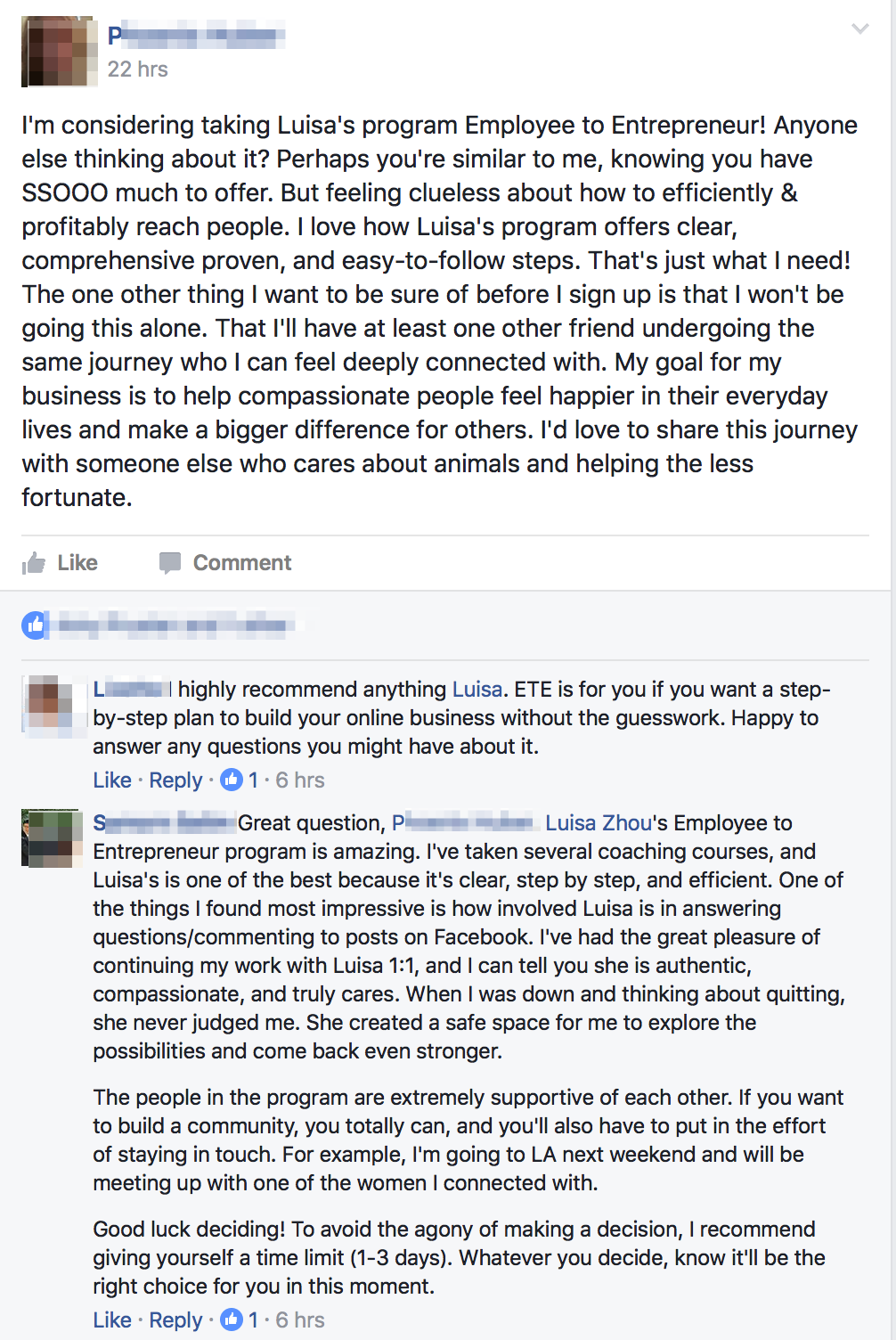
When I had a profitable business with consistent six-figure revenue, I started looking at more leveraged ways of growing my business, such as Facebook ads.
And again, the different steps I had taken before made it possible for me to move to that next phase and grow my business further.
If you focus on the step you are at right now, you don’t overwhelm yourself by thinking, “Why don’t I have 10 clients already?” or “Why don’t I have a bigger business?” Instead, you take small steps that move you forward so much faster.

Want to Build a 6-Figure Coaching Business So You Can Achieve More Freedom?
Get Instant Access To My FREE Ultimate Guide Below!
When you sign up, you’ll also receive regular updates on building a successful online business.
5. Embrace a beginner’s mindset
Even if you’re an expert in what you’re selling, you’re probably new to entrepreneurship. You WILL make mistakes, fail, and get rejected. Maybe you’ll build a few businesses that “fail” or get 30 no’s in a row from potential clients, just like I did.
If you think, “Because I got rejected or I failed, this will never work,” guess what? It won’t.
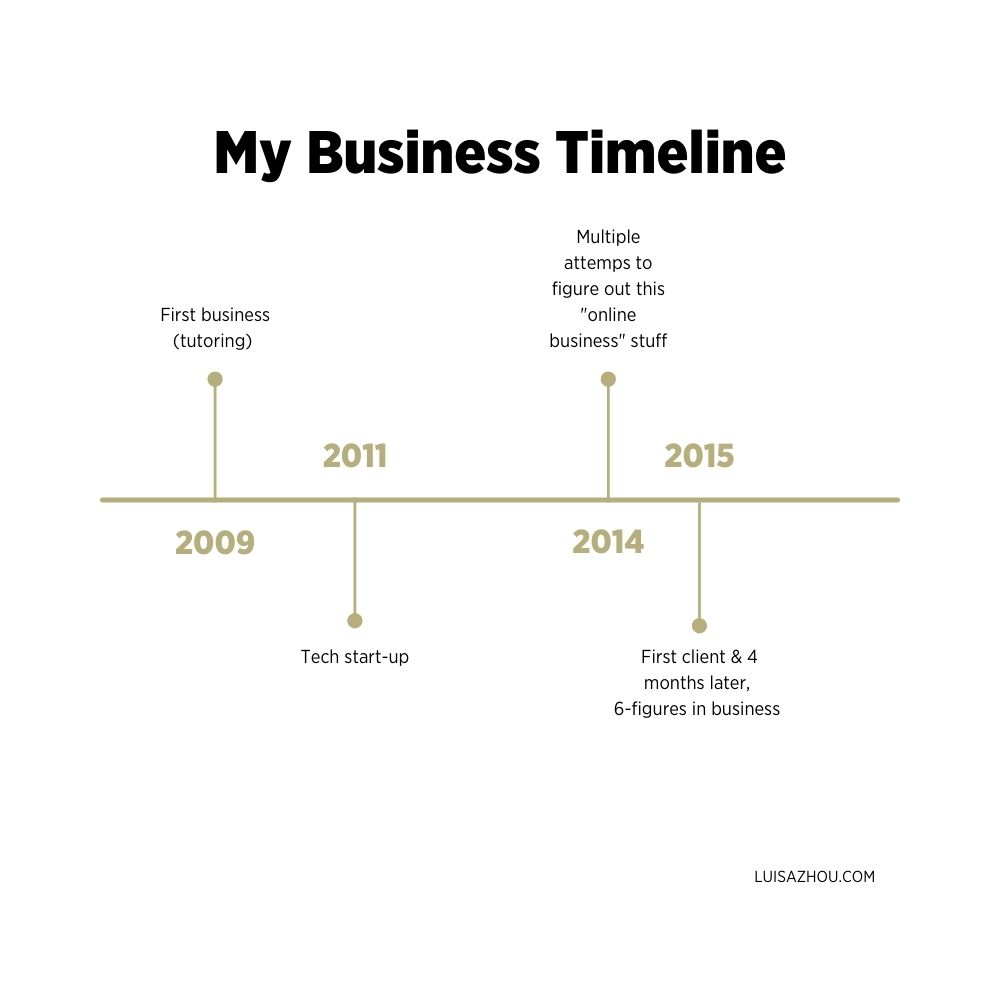
Instead, reframe failure as a stepping stone to success. That way, you essentially can’t fail.
If you take away one thing from this post, I hope it’s that you see just how possible it is for you to build your business. Ultimately, it comes down to focusing on choosing a business model that works for your goals, focusing on the right things, taking consistent action, and being resilient. That’s how to build a six-figure business, just like I did in my first few months.





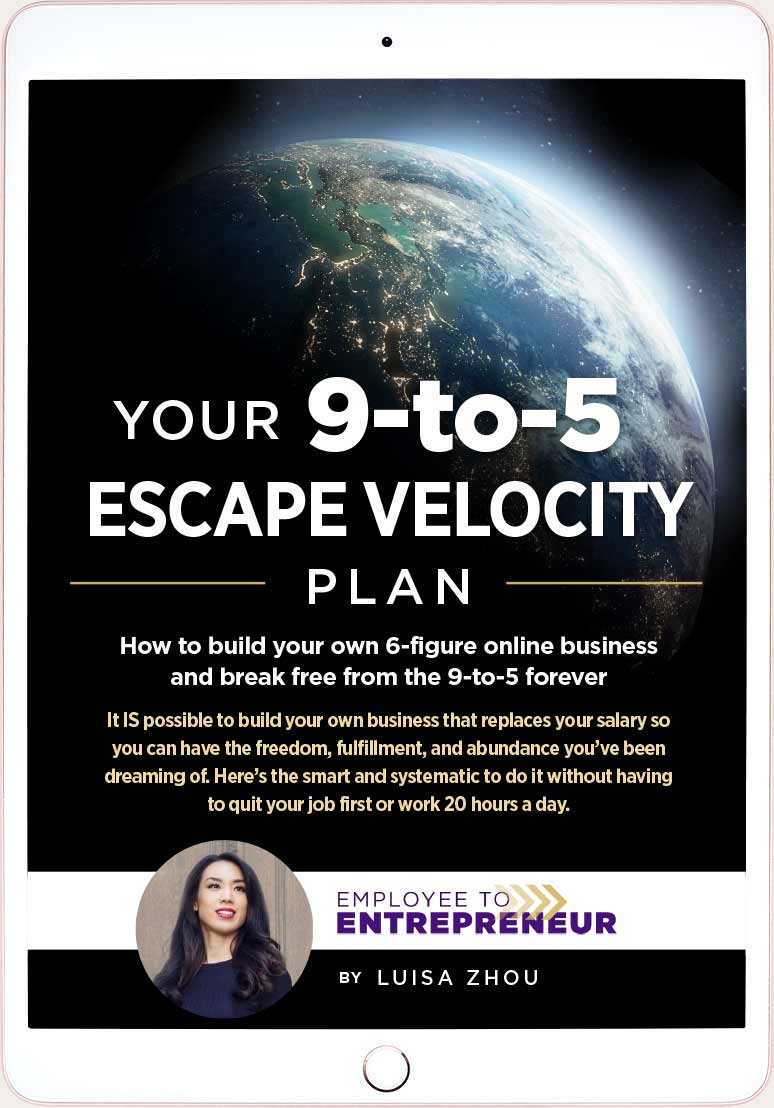



6 Responses
This was a truly amazing article! I am so inspired! Thank you for sharing your story in such detail. I am studying to be a health and wellness coach while working a corporate job. And… I am going to head to Facebook ASAP to get involved in some more groups! Fabulous advise! Cheers! Melissa
So happy to hear that you found it helpful and inspiring! 🙂 Cheers!
Thank you a lot for sharing your experience and your knowledge. You are giving a lot of value in your posts.
Glad you’re finding them helpful!
Luisa, thanks so much for your in-depth story.
I’m a copywriter myself and I can already see how much heart and effort you have contributed to this post.
Can’t wait to see which content you have next for us!
Thank you for such a sweet comment! Appreciate it!